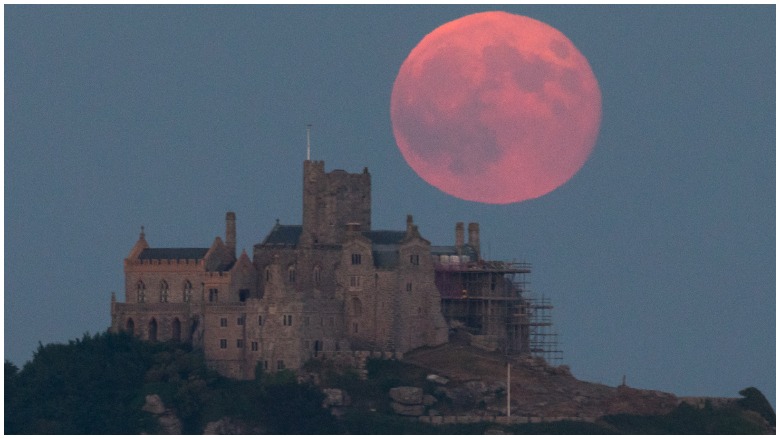
The next full moon will be a reddish, slightly dark “strawberry moon” that will appear June 5 and is expected to last three days, from early Thursday morning to Sunday early morning, according to the National Aeronautics and Space Administration (NASA).
The moon’s changed appearance, caused by the position of the sun and the way Earth‘s shadow passes through it, holds significance across many cultures.
Here’s exactly how a strawberry moon is formed and how you can see it:
What Is A Strawberry Moon?
The strawberry moon is the result of a penumbral eclipse, which takes place when the moon is close to being the exact opposite of the sun as the sun is passing through the shadow of the earth, according to NASA.
According to Earth Sky, the moon will also be closest to the red supergiant star, Antares, a star in the Scorpion Constellation.
Unlike the total lunar eclipse — during which, Earth’s shadow completely covers the moon — and the partial lunar eclipse — during which, the Earth’s shadow partially covers the surface of the moon — the penumbral lunar eclipse is much less noticeable, Thrillist reported.
There are instruments, some of which will be live-streamed, which will make the visual dimming of the moon, as well as its reduction in solar power, more visible, according to NASA.
The Moon Has Many Meanings Across Cultures
According to a Maine Farmer’s Almanac, which published the Native American names during the 1930s, the Algonquin tribes called it that because it symbolized the short strawberry harvest season in the northeast of the U.S., NASA reported. Space has said that there were other Native American tribes, for whom the strawberry moon had significance. The Ojibwe, for example, called the moon “Ode’miiin Giizis” and saw it as a time for annual feasts and welcoming people home, while the Cree called it “Opiniyawiwipisim,” or the egg-laying moon because it represented when birds and waterfowls began laying eggs.
In Europe, NASA said, they called this full moon the Mead Moon or Honey Moon because it notified farmers when the honey was ripe for harvest, which could later be used to create a mead or honey wine. This full moon also coincides with the Buddhist festival of Poson Paya, a holiday in Sri Lana that celebrates the 236 BCE introduction of Buddhism, according to NASA.
According to the Times of India, the strawberry moon also has significance in the Hindu event of Vat Purnima. During the three days of that moon, married women tie a ceremonial thread around a banyan tree in a show of love to their husbands; the tradition is based on a legend of Savitri and Satyavan, when Savitri saves her husband, Satyavan from his predicted death, by delivering an eloquent speech to the deity carrying away his soul.
How You Can See This Year’s Strawberry Moon
NASA is stating that the moon will be visible in Africa, Asia, Australia, Europe and South America but not in North America. However, you can still watch its colorful rise on a computer screen.
The Virtual Telescope Project 2.0 is offering to show the strawberry moon as it glides above Rome’s skyline. Thrillist reported that the stream will start at 3 p.m. Eastern Daylight Time.
From the U.S.’s east to west coast, according to Forbes, the best time to check are as follows:
New York: 5:18 a.m. ET and 8:23 p.m. ET
Los Angeles: 5:37 a.m PT and 8:17 p.m. PT
